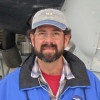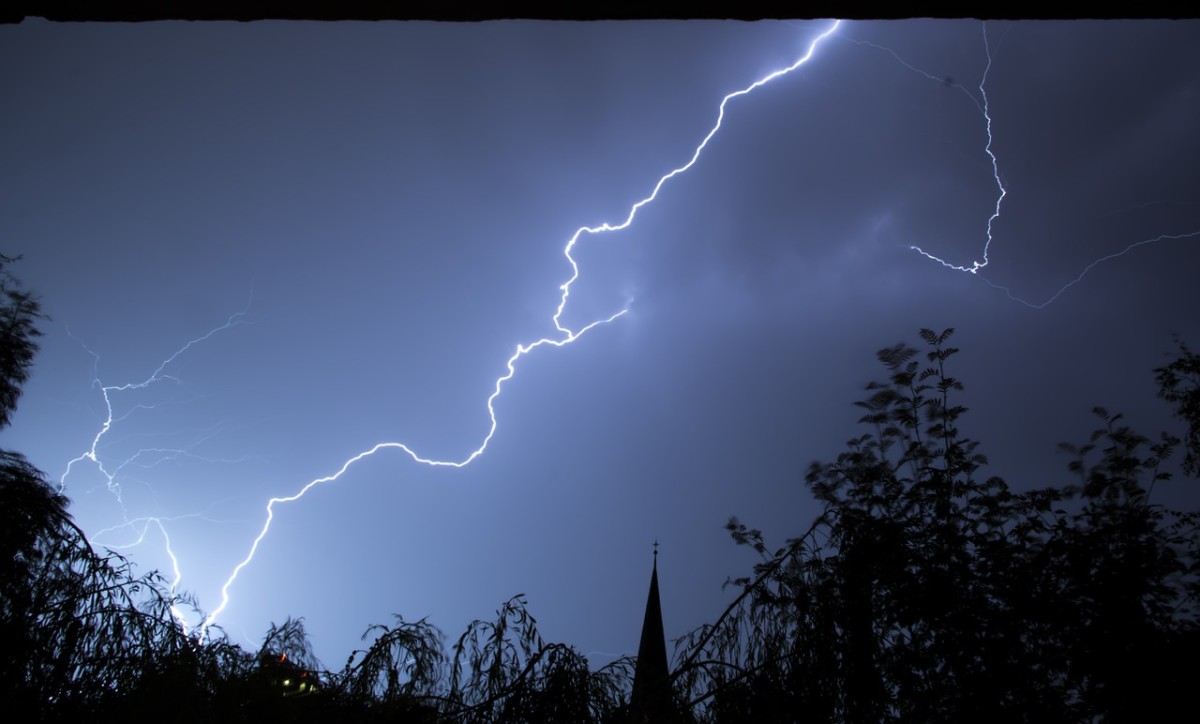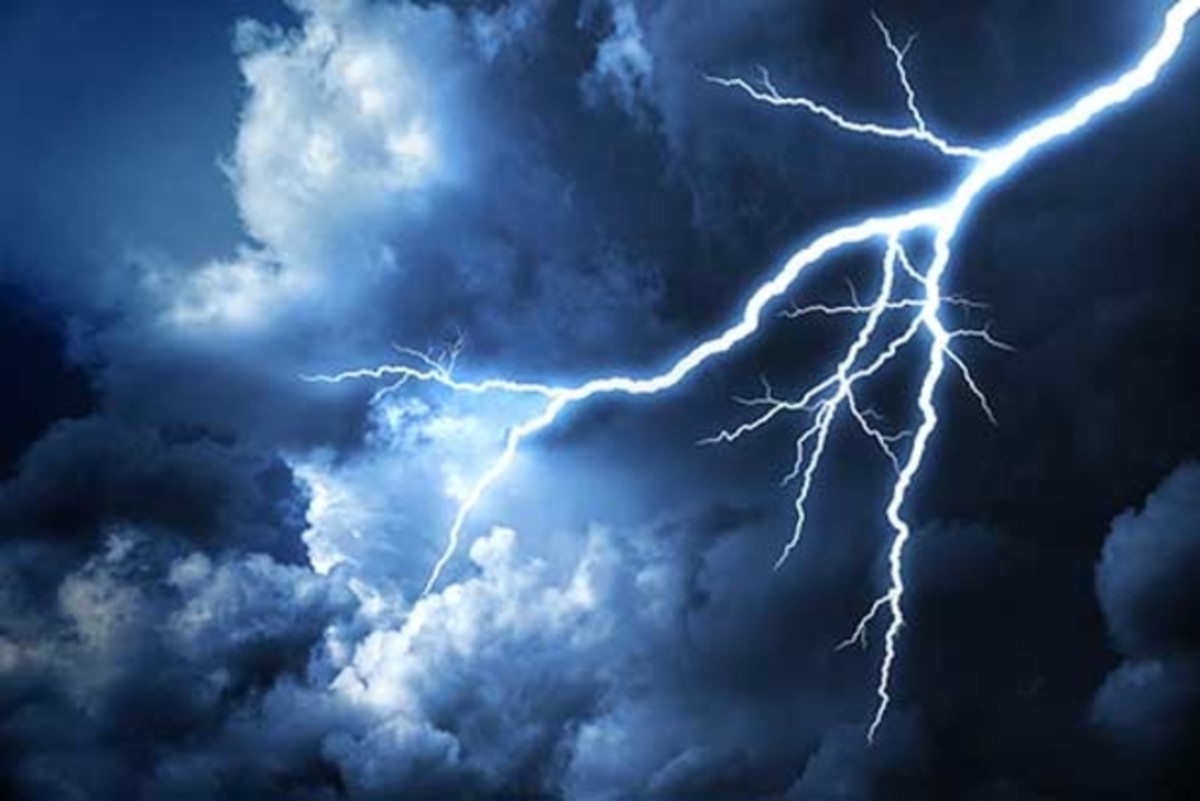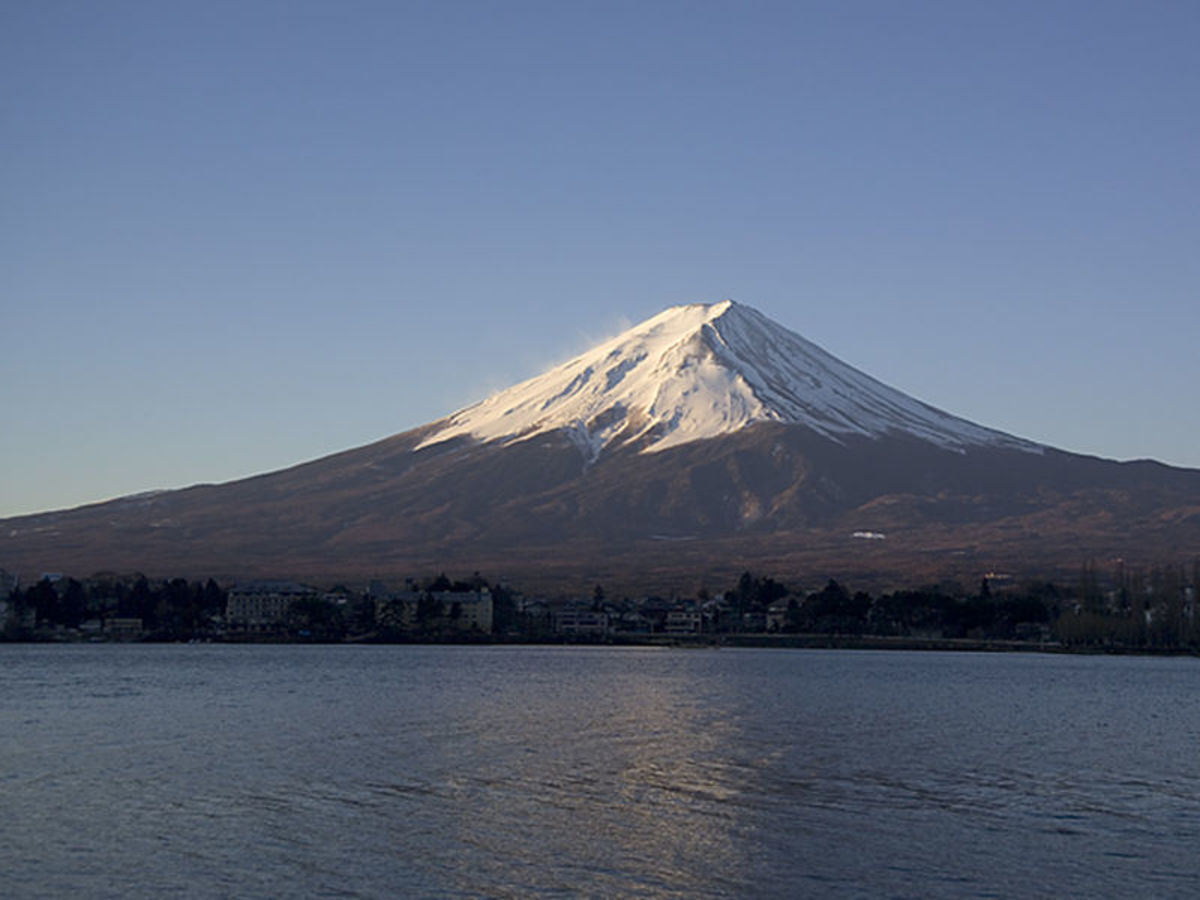Florida Wildfires - Its Time For Science
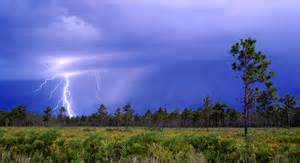
Florida - The Most Lightning Strikes in the USA
"There are more lightning strikes in Florida than anywhere else in the US" was the parting statement of my fire management officer in Colorado as I was departing Colorado for a new job in Florida. He meant it as a compliment in that I would stay active in wildfire despite moving to the Southeast. Indeed, there was a lot of lightning and everyone I met in Florida who was involved in wildfire - land managers, ecologists, and academics, all echoed high fire frequency due to the high number of lightning strikes. Oddly though, I found that I was on very few wildfires in which lightning was the ignition source - in fact, only two after being in Florida for twelve years. I chalked up the infrequency due to being responsible for a smaller acreage for wildfire response, only 100,000 acres on an Air Force range in Florida compared to over a million acres of public land and national forests in Colorado. Besides, the Air Force range had plenty of wildfires from ordnance and gunnery training as well as our prescribed burns escaping.
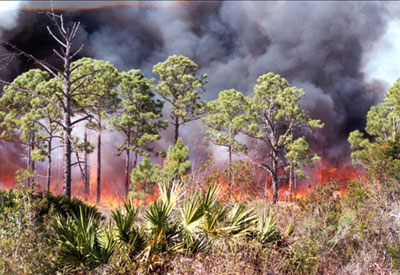
Florida Wildfire Frequency - Actually About Average
I was on board like everyone else until I came across a paper that was given at the Florida Tall Timbers Research Station in 2007 (I did not attend). It was titled Are Lightning Wildfires Unnatural? A Comparison of Aboriginal and Lightning Ignition Rates in the United States (Kay 2007). What caught my attention was a table that showed the frequency of wildfire starts caused by lightning per one million acres on national forests in the United States. The data was gathered from 1970-2002. Surprisingly, Florida averaged only 51 wildfires per million acres annually. This was comparable to the Santa Fe National Forest in New Mexico at 55 wildfires per million acres and Custer National Forest in Montana at 46 wildfires per million acres. Florida was far less than the highest national forests, Coconino in Arizona at 150 and Plumas in California at 158 wildfires. Nationally, Florida was about average.
Furthermore, I took Vailsala's National Lightning (Vailsala's 2013) map and computed how many lightning strikes it took to start a wildfire in Florida using Kay's data. For all national forests in Florida, 735 strikes. Compared to other locations in the US, national grasslands in Nebraska, 171 strikes, San Isabel/Pike National Forest in Colorado (where I worked) 500 strikes, Plumas National Forest in California, only 19 strikes. Probability of ignition is a common term used in the wildfire community. It statistically states how likely an ignition source will start a wildfire. In comparison to other states with the same lightning strike fire frequency, Florida lightning strikes had the lowest probability. Temperature, humidity, live fuel moisture, wind speed, and direct sunlight - all play important roles in determining if the ignition source starts a wildfire.
Once ignited, the fire either spreads or extinguishes. How well the fire spreads depends on the same factors as the probability of ignition as well as fuel type, aspect, elevation, percent slope, and dry fuel moisture. While anecdotal, my observation has been that wildfires do not spread as thoroughly nor as fast in Florida as wildfires I experienced in Colorado, Utah, and Texas. Generally, there is a lack of wind, more discontinuous fuel models that don't burn well (read swamps, sloughs, scrub, and lakes) and high humidities during the night and well into the morning in Florida.
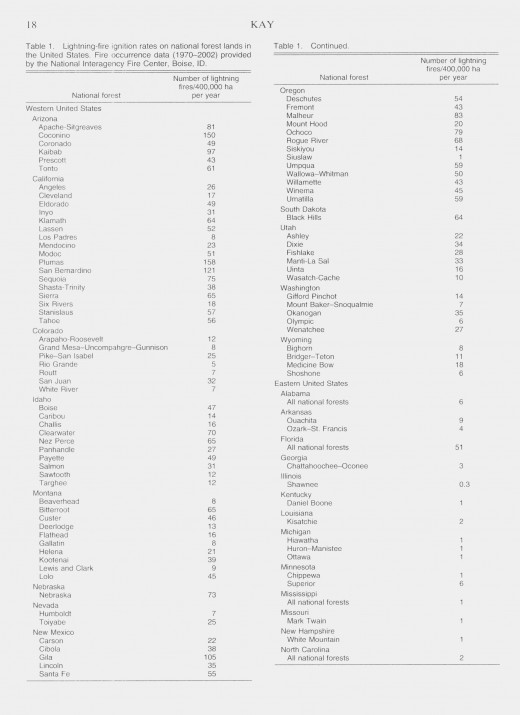
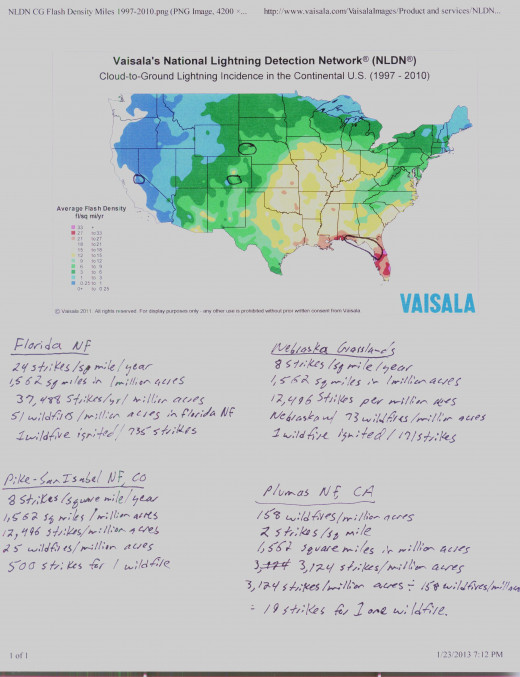
I'll Pass On The Statistics and Stick With History, Thank You.
I work with several people involved with wildfire and prescribed burning in Florida. I also find myself at meetings that have professional papers and presentations on wildfires and prescribe burning. The narrative is predictable. Maps showing Florida being the lightning strike capitol of the US, trees having fire scars showing high fire frequency, early surveyor's notes and timber company notes describing a landscape resulting in frequent fires, early naturalists notes and homesteader diaries mentioning frequent fires, and a list of plant species that require high fire frequency - all are commonly presented and all with the undertone that lightning strike fires alone or practically alone drove the historical fire frequency. At the end of the discussion I mention Dr. Kay's work and note that the frequency of lightning strike fires in Florida is about average and that the probability of ignition per strike is some of the lowest in the nation. Usually the person(s) I am speaking to are taken back. Ultimately, Kay's data is rejected and history is again reinforced. This scenario is particularly predictable amongst acedemics. One would think that presenting scientific data that at least minimally challenges historical records and their respective interpretation would generate interest. Think of it, if someone tasked you to find out the effect of fires caused by lightning strikes, would you not study active wildfires started by lightning strikes while they were burning and soon after they were finished? Why would you limit your study to only written historical records and artifacts many years old? Now if you were tasked to study the history of past fires on a landscape, I could see looking at the history, but most wildfire study is within the context of using fire as a tool to influence a landscape for specific management goals. If you claim to be working with natural ecosystem process, what fires are started by lightning and what fires are started by people becomes important.
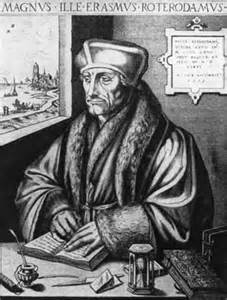
A Eurocentric Worldview of the New World
Many North American ecologists would have loved the New World to not have had any people in it when first discovered by Europeans. Most are evolutionists and believe "nature" is faultless and humanity corrupt. Indeed, by Old World impacts, the New World would have appeared "pristine", but to discount the impact of the indigenous people in the New World at the point of European contact is not practical. Still, the desire to trivialize indigenous people's impact (for better or for worse) is strong. Only Europeans are viewed as having any significant influence and it is nearly always bad - a worldview I term "Eurocentric". So, when I point out that lightning strike wildfires are not that frequent, it automatically infers that if the historical records show frequent fires, then there was another ignition source other than lightning - ie: indigenous people using fire to change or maintain the landscape. This in turn threatens the pristine mystic which is central to their worldview. You would have to include human activity into the classifications and models for ecosystems.
Lightning Strike Wildfires - Let's Try Science
I have no objection to relying on historical records and artifacts in guiding you to explain vegetation communities and ecosystems - when history is all you have. However, when a scientific approach is available, meaning you can gather data that is observable, measurable, and repeatable and test a hypothesis - try science, especially if initial scientific data or anecdotal observations seem to run counter to the accepted historical narrative.
In September of 2013 I was reviewing our installation's first formal wildfire and prescribed fire management plan. It was a draft. In several instances the expected narrative of frequent wildfires caused by lightning was stated as determined by historical records and artifacts. In one instance, lightning strike wildfires were cited as the sole source of ignition for thousands of years (not sure where the artifacts were for this - possible lake sediments). Once again, I referenced Kay's paper and requested that at least the ignition source be removed from such entries and just state "historical wildfires".
I also relied on my experience with large, Type I fires back West. On really large, protracted fires, a meteorologist and fire behavior analyst are on-site as well as several forward observers. These people work together to project the fire's advance on a daily basis. Typically forward observers are classifying the various kinds of fuels in the fire's path. The fire behavior analyst takes the fuels information and looks at maps or is even flown over the area to also consider the terrain, aspect, and natural and artificial fire barriers the fire will encounter. The meteorologist works with the fire behavior analyst to determine the current and future weather effects on the fire. Ultimately, the team prepares a map to the Operations section of the fire organization. Operations then determines where to deploy assets to fight the fire, and more importantly, where to avoid putting people in harm's way. The following day the fire advances and the results are measured. The scenario repeats until the wildfire is contained enough to where the meteorologist and fire behavior analyst are no longer needed. I've been out of the loop on large, wildfire suppression for nearly 15 years and can only image how much better the information, technology, and modeling that is available to predict a wildfire's advance or even demise with changes in weather.
What I offered in my review was to model lightning strike wildfires on our installation over a "natural" landscape. Given all the soils and vegetation data we have, it would be easy to recreate a landscape devoid of modern human influence (ie:remove roads and fence lines) via GIS mapping. The next step would be to literally wait for a lightning strike to start a wildfire and set up a RAWS (remote access weather station) to record the weather at the fire's location. Obviously we would put the wildfire out, but between the weather station, GIS mapping, and using wildfire modeling, the extent of the wildfire could be projected. Possibly the fire would model off the installation, but there are still resources available to continue to track the wildfire. While not perfect, this is truly a scientific approach in that others could test the fire models with lightning strikes and GIS at their locations. I did put in the caveat that I would recommend this approach only if knowing fire frequency and extent from of lighting strike wildfires is really, really necessary for our management. An unexpected result was that my Flight Chief liked the idea and took the concept to our major command. Who knows, perhaps the ecological effects of lightning ignited wildfires will be better defined through this scientific method.
Literature Cited
Kay, C.E. 2007. Are lightning fires unnatural? A comparison of aboriginal and lightning ignition rates in the United States. Pages 16–28 in R.E. Masters and K.E.M. Galley (eds.). Proceedings of the 23rd Tall Timbers Fire Ecology Conference: Fire in Grassland and Shrubland Ecosystems. Tall Timbers Research Station, Tallahassee, FL.
Vaisala NLDN: http://www.vaisala.com/en/services/dataservicesandsolutions/lightningdata/Pages/NLDN.aspx
